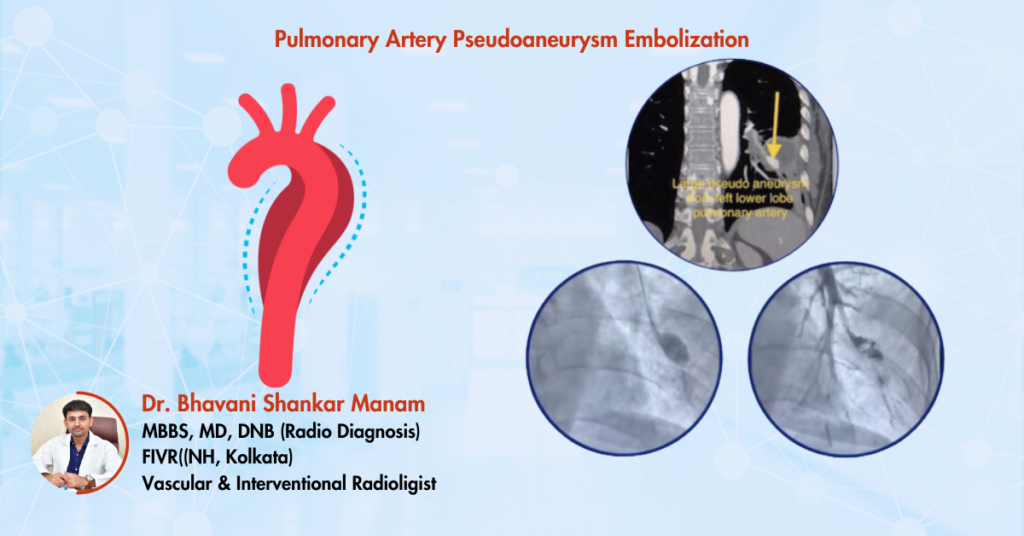The Patient Presentation: Sudden Abdominal Pain and Superior Mesenteric Artery Aneurysm
A 57-year-old female presented with a sudden onset of Mesenteric Aneurysm Embolization prompting immediate medical attention. Imaging studies, including a computed tomography (CT) scan, confirmed the presence of a superior mesenteric artery aneurysm (SMA aneurysm). The aneurysm’s large size raised concern for rupture, which could lead to life-threatening internal bleeding.
The Intervention: Embolization for Superior Mesenteric Artery Aneurysm
Embolization Procedure to Treat Superior Mesenteric Artery Aneurysm
Upon confirming the diagnosis of a superior mesenteric artery aneurysm, immediate action was taken to prevent rupture or other complications. The treatment of choice was embolization—a minimally invasive procedure aimed at sealing off the aneurysm and preventing further complications such as rupture or thrombosis. In this case, coiling was utilized as the embolization technique.
Coiling: A Life-Saving Procedure
During the procedure, specialized equipment was used to insert coils into the aneurysm. These coils effectively blocked the aneurysm’s blood supply, stabilizing the vessel and preventing rupture. A follow-up CT scan performed one week later showed no signs of the aneurysm, confirming the procedure’s success. The patient was symptom-free and showed no further signs of abdominal pain.
Aneurysm Complications: Understanding the Risks of Untreated Aneurysms
Aneurysms, particularly those in the superior mesenteric artery, can lead to several serious complications if left untreated. Understanding these risks is crucial for effective management:
- Rupture: A Life-Threatening Emergency
Rupture of an aneurysm is one of the most dangerous outcomes. A ruptured SMA aneurysm can cause severe internal bleeding, leading to shock or even death. Early intervention through embolization helps prevent such catastrophic events.
- Thrombosis: The Risk of Blood Clots
Aneurysms can promote blood clot formation, increasing the risk of thrombosis. If the clot dislodges, it could travel through the bloodstream, causing a blockage in other vessels or organs, potentially leading to organ dysfunction.
- Pressure on Surrounding Tissues
A large aneurysm can compress surrounding organs, resulting in pain and functional impairment. For example, an SMA aneurysm may put pressure on the intestines or other abdominal structures, leading to digestive issues or severe discomfort.
- Infection: A Serious Concern
Infections within aneurysms can lead to sepsis, a life-threatening condition. Infected aneurysms require urgent intervention to avoid systemic infection and sepsis, which can rapidly become fatal.
- Growth and Escalating Risks
Aneurysms are dynamic and can grow over time. As an aneurysm enlarges, it increases the likelihood of rupture and other complications. Regular monitoring and timely procedures like embolization are crucial for preventing these risks.
Conclusion: The Importance of Timely Intervention in Aneurysm Treatment
This case study of a 57-year-old woman with a superior mesenteric artery aneurysm highlights the importance of early diagnosis and intervention. The embolization procedure was successful in treating the aneurysm, preventing rupture, and allowing the patient to recover without further complications. Embolization remains a highly effective and minimally invasive option for managing aneurysms and preventing the severe outcomes associated with this condition.

